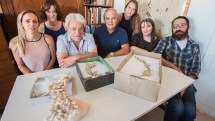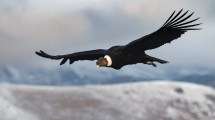In the Andean zone that goes from Neuquén and Río Negro to Tierra del Fuego, there are 110 species of insects. Scientists from the Institute for Research in Biodiversity and Environment (INIBIOMA), which depends on Conicet and the National University of Comahue (UNCo) They wrote and published a guide that allows you to identify these insects and learn about their fascinating lives.

The guide “Insects of Patagonia” was in charge of Juan Paritsis, Carolina Quintero and Marcelo Kun, and includes illustrations by Luciana Ammassari.
“There is a growing interest in learning more about our biodiversity and insects are a big part of it. Although they do not have as many followers as birds, They are a fascinating group that allows them to be observed in practically all environments. because they are everywhere, from our gardens to the tops of the hills,” Paritsis told BLACK RIVER.
“Insects draw attention for the diversity of forms and habits. Some species look like science fiction,” she added.
The guide, which they published with the Artemisa publishing house, is a pioneering contribution. There were already some guides on insects for Argentina. But there was no publication available at the regional level for Andean Patagonia.
“In our region there are many species that are very attractive due to their customs and also because of their shapes that are unique in the world,” Paritsis commented.
Some of the most interesting native insect species, Either because of their importance in the environment or because of their appearance, included in the guide that can be found in the Andean zone of Neuquén and Río Negro, are the following:
– Mangága: It is one of the bumblebee species in decline. Its scientific name is Bombus dahlbomii. Its decline was caused by the introduction of two species of bumblebee of European origin through Chile, B. ruderatus and B. terrestris. The latter is being bred worldwide and imported for pollination of greenhouse crops. In Patagonia, this species introduced diseases that were not there before, in addition to competing with the resources of the native bumblebee.

– Coihue metal drill: It is a species of beetle and is scientifically called Cheloderus childrenis. It is considered one of the most beautiful among the representatives of the Coleoptera order.
Its body is bright green with metallic overtones, iridescent red elytra, bright blue antennae and legs corroborate this. It measures between 35 and 40 millimeters, and the female larger than the male.
– owl moth: It’s a night butterfly. Its scientific name is Polythsana rubrescens. It stands out for presenting two flight periods a year. The first adults fly between mid-February and mid-April, while the second generation appears between September and November. The males have brighter colors than the females and fly in the morning, between 9 and 13 hours; females fly at night and are attracted to artificial light.

–Darwin’s Beetle: The English naturalist Charles Darwin described it as a splendid beetle, “which has developed enormous jaws, is bold and aggressive.”
The adults are observed during the summer and are arboreal. They feed by sucking the sap from trees.

